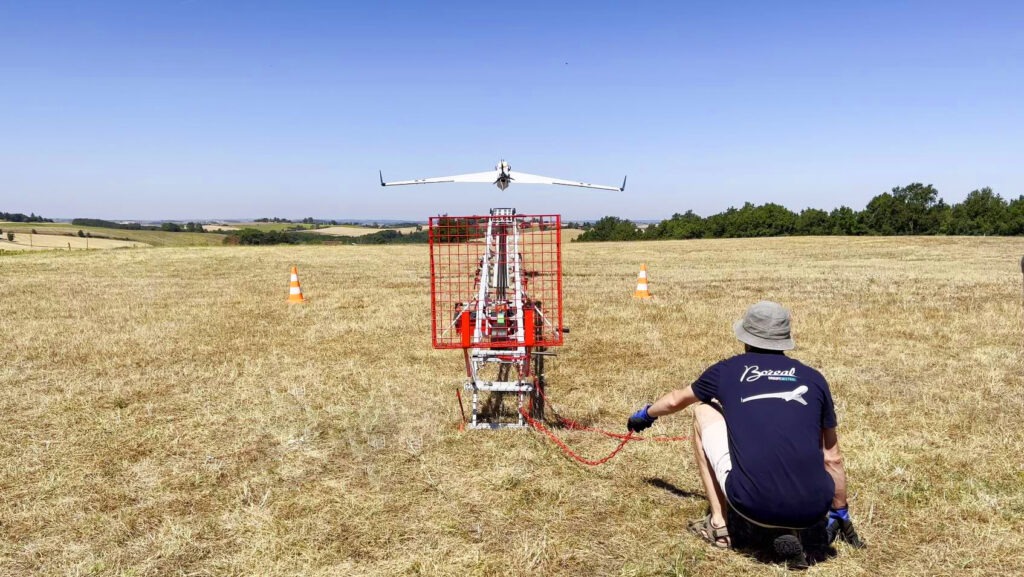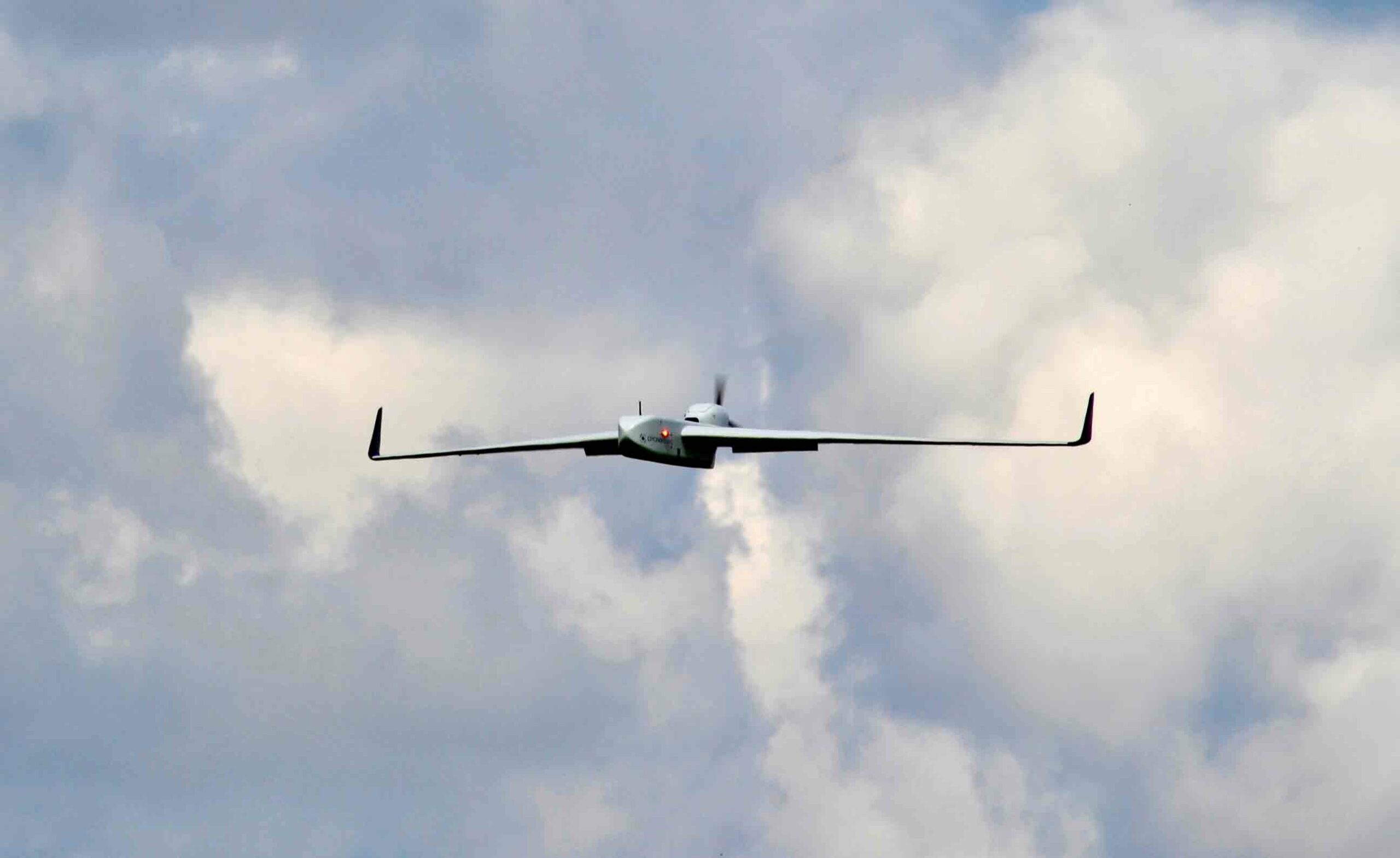
For long-distance surveillance drones like the BOREAL drone system, the radio link limits the range to about 110 km over maritime or terrestrial zones. With its range of 800 km, the BOREAL drone must carry satellite communication technologies on board to operate beyond the direct radio range.
After demonstrating in the spring of 2021 the possibility of relaying a video stream by satellite from the ground to a remote center, BOREAL thus took a new step by demonstrating the drone’s ability to carry satellite communication devices capable of transmitting images or video data from board. This information flow is then accessible anywhere, especially in regional operational surveillance and rescue centers (CROSS…), subject to internet access.
This demonstration was carried out as part of the ISR+ project financed by ESA, in which the company ATMOSPHERE (communication solutions with the IRIDIUM satellite system) is a partner. This work was carried out with the support of CNES, through the CESARS platform, which provided its technical support and an Aviator UAV 200 satellite modem.
In order to evaluate the technologies available for a drone like the BOREAL, the teams implemented two different satellite communication systems: one with the LEO system (satellites from the IRIDIUM constellation) and the other using a satellite geostationary (INMARSAT). Each of these systems has its own advantages in terms of costs, weight, and performance, which allow for the best adaptation to the payload used according to the mission.
During a test flight campaign carried out in early August 2022, both technologies proved to be perfectly functional on board the BOREAL drone. The lights are green for deploying the BOREAL system for maritime and land surveillance on a larger scale.



